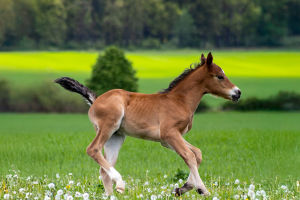Have you ever watched a cheetah sprint across the savannah or a salmon leap upstream and wondered how these creatures achieve such incredible feats?
Animals across the world have evolved astonishing abilities in speed, strength, and stamina, often surpassing anything humans can imagine.
From running faster than a car to lifting hundreds of times their body weight, these record-breaking athletes of the wild show us the extremes of nature's design.
Speed: Nature's Sprinters
When it comes to sheer speed, few animals can rival the cheetah. Capable of reaching 60 to 70 miles per hour in short bursts, cheetahs can accelerate faster than most sports cars. Their lightweight frames, flexible spines, and powerful leg muscles allow for this explosive velocity, making them exceptional hunters on the African plains.
Not far behind in aquatic speed is the black marlin. This fish can slice through water at speeds exceeding 80 miles per hour, using its streamlined body and strong tail to chase down prey. On land and sea, speed is often a matter of survival, helping animals escape predators or secure meals quickly.
Strength: Power Beyond Size
Strength in the animal kingdom can be measured in surprising ways. Consider the leafcutter ant: it can lift and carry objects up to 50 times its own body weight, far beyond what humans could manage relative to size. This tiny insect relies on teamwork and muscular efficiency to transport leaves back to its colony, proving that strength isn't just about size—it's about function and adaptation.
Larger animals showcase a different kind of power. Elephants, for instance, can push down trees or lift logs weighing hundreds of pounds. Their massive muscles, combined with intelligent problem-solving, make them formidable forces in their environments. Even a single elephant demonstrates a level of raw strength that dwarfs any human capability.
Stamina: Masters of Endurance
Some animals are built not for speed or raw power but for incredible endurance. The Arctic tern holds one of the longest migration records in the animal kingdom, traveling over 40,000 miles annually between polar regions. This tiny bird survives extreme conditions, relying on efficient energy use and navigational instincts honed over thousands of years.
On land, sled dogs like the Alaskan husky demonstrate extraordinary stamina. Capable of running 100 miles a day across frozen tundras, these dogs use endurance, teamwork, and pacing to maintain steady performance over long distances. Their energy management strategies offer insights into natural adaptations for survival over sheer force or speed.
Combined Skills: The All-Rounders
Some animals excel across multiple athletic traits. Consider the tiger: it combines bursts of speed, powerful muscles, and remarkable endurance. Tigers can stalk prey quietly for hours, then explode into a sprint to catch it, demonstrating how multiple abilities come together to create a top predator. Similarly, dolphins combine agility, speed, and stamina in the water, enabling them to hunt effectively, evade threats, and perform acrobatic leaps that amaze observers.
Lessons from Animal Athletes
Observing these extraordinary abilities offers more than just awe—it provides lessons in adaptation, efficiency, and the role of natural selection. Animals evolve specialized traits to survive, whether it's sprinting faster, lifting heavier, or traveling longer distances. These examples remind us that performance in the wild isn't arbitrary; it's a fine-tuned balance between energy, anatomy, and environment.
Speed often relies on specialized body structures: flexible spines, strong limbs, and lightweight frames.
Strength isn't always about size: efficient muscles and mechanical advantage matter.
Stamina depends on energy management and environmental adaptation.
Inspiration from the Wild
Watching these animal athletes pushes us to reconsider our own physical limits. Their feats encourage curiosity about biomechanics, endurance training, and how different species solve survival challenges. While humans may not sprint like cheetahs or lift like elephants, we can learn from the strategies animals use—efficient energy use, proper pacing, and adaptability in unpredictable environments.
Next time you see a hummingbird hover effortlessly, a wolf traverse miles of rugged terrain, or a horse sprint across a field, remember: these are nature's athletes, each perfectly tuned to excel in their world. Their speed, strength, and stamina are not just impressive—they are a reminder that the natural world is full of extreme performers, each with lessons waiting to be discovered.


